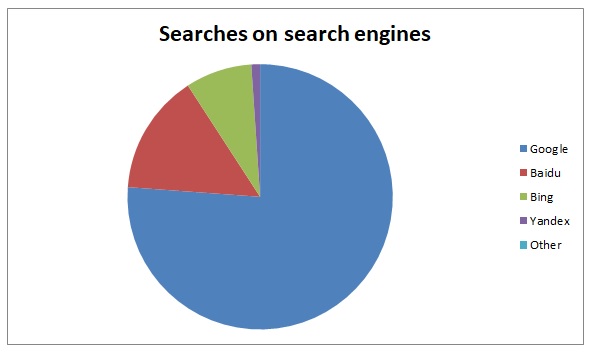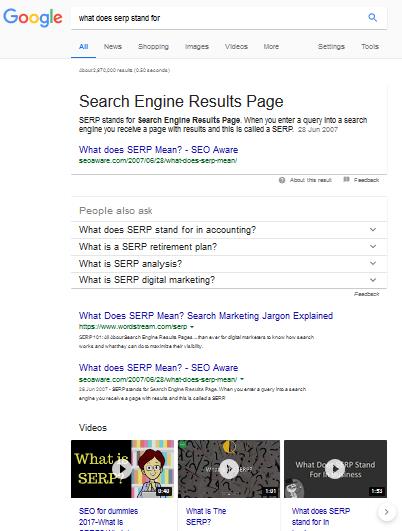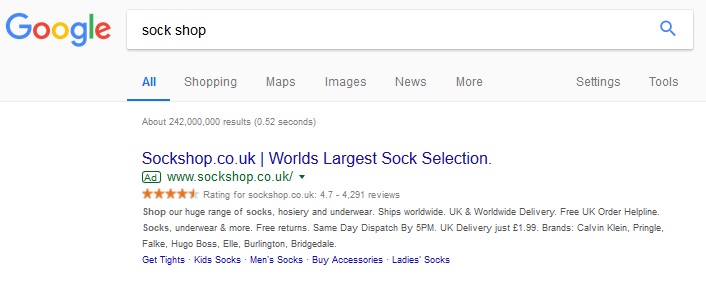Search engine optimization, A.K.A. SEO, is the way of tinkering with your website in a way which improves its rankings in search engines.
SEO sounds simple enough. But in reality it can be both complicated and never-ending.
This is the first hurdle. You’ll never be ‘done’ where search engine optimization is concerned. There will always be more you could do. However, every little bit helps. So any investment you can give to your SEO strategy is worthwhile. Don’t panic because you cannot do it all.
SEO and the Search Engines
SEO is all about where you are positioned in a search engine’s results. We say ‘search engine’, and not just ‘Google’, because the other players are still somewhat important. Take a look at this chart of search use:

Data source: https://www.netmarketshare.com/search-engine-market-share
Yes, Google has the lion’s share. However, Baidu is growing and Bing is still a worthy contender.
SEO is about raising your ranking on all search engines. The theories are the same.
Next, you’ll need to understand a couple of search engine terms in order to understand SEO.
Jargon Busting SEO
When discussing SEO it is useful to understand the lingo used.
SERP: SERP means Search Engine Results Page. These are the pages with all the links that come up when you use a search.
Take the example here.

We’re including this example to show you how Google now ranks results. You’ll often see the format below.
There is an ‘info’ box followed by a few similar questions. Then you see a couple of results. Next come videos. More results follow. Don’t forget that there will often be some Pay Per Click ads (PPC) up there too.
It’s important to realise how Google does this because it affects where you are likely to sit in rankings.
Our next piece of jargon-busting is CRT.
CRT: CRT stands for Click Through Rate. This is the number of people who actually click on a result, not just see it on the SERP.
CRT is vital to understanding SEO. That’s because an overwhelming 95% of all clicks happen on the first SERP for a search. Realistically, you need to get on that first page.
However, it doesn’t stop there. The top result on the first SERP gets nearly one third of all the search traffic. By the time you’re at the seventh listing, they only get 3.5%. 67% of all clicks go on just the first five listings.
That’s where SEO comes in. SEO is the means of getting you up the rankings. It’s a way of improving your CTR.
It’s all about algorithms
Search engines use algorithms to work out the rankings on the SERPs.
First of all you need to discount the PPC ads. They look like this, with the little ‘Ad’ icon and appear at the top of results:

SEO is aiming for the ‘natural’ or ‘organic’ results which appear under these. So what’s the winning formula behind the algorithm?
The search engines use their own system of scoring webpages. Their aim is to select the most relevant and most authoritative. Their goal is to best answer the user’s question.
Google is known to use over 200 different markers to work out these scores. The truth is that we don’t know what all these markers are. No one does except the Gods of Google alone.
That doesn’t mean it’s time to throw your hands up in the air out of SEO despair.
There is a great deal of useful info about SEO that we do know.
The basic premise of SEO
To score highly for SEO, a web page will be:
· Accessible: You need to access the web page easily from a range of devices.
· Technically great: Everything works, including buttons and links. The code in the background is sound.
· Directed: Search engines are clever, but at the end of the day they aren’t human. The search engine ‘spiders’ crawl a site and look for markers they can understand to give them clues abut that page. This will include things like H1 and H2 tags, meta descriptions and alt text.
· Visited: The more visited a page is, the more authoritative it is deemed to be. This also includes how long a visitor spends on the page once they are there.
· Quality: The more informative and expert the content, the higher it will rank.
Google’s E-A-T acronym
Google explains the basic principles of SEO further, through their E-A-T approach.
· Expertise: This is showing that the author of the content is the expert in their field. Hence guest posts are a goodie. This may mean being a certified professional, but it can also simply mean being well-informed in your niche.
· Authoritativeness: You also need to show that the author is the authority in their field. This comes over time. It’s also why using a ghost-writer whilst using your industry name can match expert writing with your authority. Bios and by-lines are a great way of demonstrating authority. Conducting and citing research is another.
· Trustworthiness: This is about how beneficial you are to your readers, and how genuine. A good example of how to work this out is to ask yourself: “would I write this if search engines didn’t exist?”
Within each of these there are lots of different markers used. These then slot in to the machine learning algorithm behind the search engine.
What does SEO look like in practice?
There are various different ways you can ‘do’ SEO. The good news is that many should be happening ‘naturally’ by providing great informative content for your audience. You can take a pick n’ mix approach and build up SEO gradually over time.
Being successful with SEO requires a number of different skill sets. It can be worth outsourcing these to respective experts in their field.
· Technical audit: A technical audit involves an SEO web developer to thoroughly check your site. They will remove errors and check it can be crawled and indexed. This should also feed through to ensuring the site navigation works.
· Links: There are two types of link you need to think about for SEO: inbound (or backlinks) and outbound. Inbound are ones from other web pages to your page. This is the topic of a whole post by itself. Outbound links are ones you use in your content. These back up stats and facts. They show you are using high-quality research.
· Keyword research: This is analysis of which words are most used by your prospective audience. These keywords are then used in various different ways to ‘signpost’ the search engines to your web page.
· User experience: User experience focuses on making sure the content on the site meets the E-A-T acronym, is easy to read, informative, engaging and the like. Content is king here, and SEO through content is a long-burn. It goes on giving over and over again.
· Content: Content needs its own category because within different forms of content there are ways of improving SEO. For example, using the keywords from the keyword analysis strategically in the text. SEO-friendly content will also include headings, sub-headings, bold, uniqueness and more.
· Shareability: Being shared helps SEO because it builds links and builds engagement. Getting content shared on social media and elsewhere improves rankings.
Never stop with SEO
There is a great deal more to do with SEO. However, this isn’t to daunt you. It’s not black magic, but it does involve gradually mastering different factors.
You don’t have to do it all at once. Improving the SEO on your site is a process. Indeed, the optimisation element should be a gradual and ongoing strategic approach. Go back and refine things you’ve done. Test them, see what works. Improve and then build more.
The easiest way to get started with SEO is to focus on your content marketing. Understand what your potential audience wants and needs. Create content which naturally meets these wants and needs. Make sure it’s the best available content of its type.
It won’t illicit immediate results. It’ll be a slow and gradual growth. However, this is the most powerful SEO type of all.
Get help with your SEO content marketing by ordering exceptional brand-focused content in our content shop here.
Chris Brown is owner, head copywriter and SEO nerd at The Content Ninja. Chris regularly writes SEO-friendly content for SMEs and big business alike.
Image source: Flickr

